As motoring enthusiasts we all have a favourite (or two) when it comes to the various pressed, beaten or moulded automotive art…
The Italians have had a long tradition of art worthy cars for many to aspire. So what happens when the Art World decides to pay homage to a predominately Australian automotive heritage? Well you get the National Gallery of Victoria’s ‘Shifting Gear – design, innovation and the Australian car’ exhibition.
The NGV’s ‘Ian Potter Centre’ in high profile Federation Square, opposite Melbourne’s famous Flinders St Train Station has gone all out to show a variety of Aussie ‘coachbuilders’ art from the roads and the race tracks, ‘a celebration of Australian Automobile design represented by 23 cars dating from the late nineteenth century to the present day’.
Despite there being a lot of red involved, not one has an Italian sounding car name and only one has bodywork with a close relationship to Maserati.

‘Efijy’ – Shifting Gear? Or Cape Canaveral we have lift off? Holden built ‘Efijy’ as a Motor Show concept 10 years ago – Corvette basis, 6 litre supercharged GM LS2 644bhp V8 & 4 speed auto with ’55 FJ Holden looks
Upon entering the precinct, Holden’s Efijy greets you. It’s long and oh so low stance ready for cruising along Carlton’s Lygon St.
Then an entry fee covers viewing the main exhibition halls with more than enough variety for all to come away with a favourite that wouldn’t look too out of place sitting in your garage or shed.
It was a tad rushed when primotipo visited, so give yourself at least an hour to pass through and enjoy.
Several of the cars have long standing Australian Motor Racing Heritage, so it’s interesting to see how the Art World perceives them. Certainly different to the bitumen they usually frequent! And indeed, substantially different to seeing them at the likes of Phillip Island or Sandown.
‘Shifting Gear’ runs until July 12 with more details here:- http://www.ngv.vic.gov.au/exhibition/shifting-gear/
All exhibits details – http://www.ngv.vic.gov.au/wp-content/uploads/2014/08/ShiftingGearLabels-web.pdf
And remember not to get told off by security for using a camera flash!
A Unique arrangement that allowed some smart, capable Aussies to take on the world, Brabham BT19 Repco. Brabham and Tauranac based in the UK collaborated with Repco in Melbourne to gain a head start on the new 3 litre F1 Grand Prix rule changes for 1966. Jack and this Brabham successfully taking on the ill prepared other teams within the F1 paddocks and grabbed both Drivers’ & Constructors’ Titles in 1966 and 1967. (Denny Hulme grabbed the Drivers Title in 1967).
Regular readers will know we have covered the history of these achievements in some detail in previous posts; this one about the ‘RB620 series’ 1966 Championship winning engine…https://primotipo.com/2014/08/07/rb620-v8-building-the-1966-world-championship-winning-engine-rodways-repco-recollections-episode-2/
and this one about Jacks’ 1966 Championship Year…https://primotipo.com/2014/11/13/winning-the-1966-world-f1-championships-rodways-repco-recollections-episode-3/
And in the red corner we have Purvis Eureka, Paul England’s Ausca (mostly hidden), Elfin Streamliner Climax and Molina Monza Holden…
Garrie Coopers’ Elfin concerns first production racing car was the Elfin Streamliner, like many other designers he took a long look at Chapmans’ Lotus 11 and was consistent with many elements of it in his own interpretation; multi-tubular spaceframe chassis, slinky, light aluminium body and a range of engine configurations to suit customer choice. The car on display is the ‘ducks guts’ with Coventry Climax FWA engine and front wishbone, as against split front axle setup.
Elfin built 23 of these cars from 1959 to 1963, Cooper setting the foundations for high standards of design and manufacture which were his hallmark and sustained commercial success.
When Ausca met Eureka; Nice juxtaposition of the 70’s Wedge with the curvaceous 50’s. Not many cars have been built with full canopy door openings. But with the Purvis Eureka and Holden Hurricane this exhibition has two.
Allan Purvis, an advertising executive, obtained the rights to the English developed ‘Nova’ building over 650 cars in Melbournes’ Dandenong between 1973 and 1989 considerably improving the design as he went along. The car was based on VW Beetle chassis and mechanicals although Purvis built some cars with the Ford ‘Kent’ 1600 engine, a very ‘tunable lump’ with bits from Cosworth, Holbay and the like.
Despite its Maserati A6GCS looks, the Paul England-built Ausca has links to Repco and Holden too. A gifted engineer, the Ausca remains fitting testament to Paul’s skills of 60 years ago. He passed away last year
Paul England and his friend Bill Hickey built the Ausca in their spare time at Repco Research in Sydney Road, Brunswick the clever, light car having a ladder frame chassis, a fibre glass body, the pair making the moulds. Holden front suspension was used, England narrowing the track by cutting 6 inches out of the middle of the cross-member and a Holden rear axle casing also shortened by 3 inches, suspended by quarter elliptic springs, radius rods doing locational duties.
Steering was by Peugeot rack and pinion, Repco subsidiary Patons provided the drum brakes the car powered by the very first ‘Repco Hi-Power’ cross-flow head for the ubiquitous Holden ‘Grey Motor, the engine good for around 115bhp @5000 rpm using 2 1 3/4in SU carbs 1956. Gearbox was a Fiat 521 using straight cut gears, the car first raced late in 1955.
The Chamberlain 8 is about the wildest Australian Special of all and deserving of an article in its own right…
Chamberlains’ as a family had a rich engineering heritage, originally manufacturing ball bearings and later tractors so Bob Chamberlain and his friend Bob Price had access to the toolroom and factory facilities to build their outrageously innovative space frame chassis, independently sprung, front wheel drive car.
First completed in 1928, the car evolved over the decades. After a succession of unreliable motor cycle engines Bill Chamberlain decided to build an engine himself. The result was a 1004cc 2 stroke with 4 cylinders and 8 pistons, two crankshafts and a Rootes type blower. Its scream was its hallmark @ 7000rpm, at a sedate 5000rpm it developed 80bhp.
The Chamberlain competed in 3 AGP’s at Phillip Island in the 1930’s coming into its own post war when one of the Chamberlain’s cousins, Jim Hawker built his own spark plugs and improved its electrical system.
The car never left the families hands and was restored for the 1978 Phillip Island 50 Year AGP Anniversary, its now owned by John Hazelden after the brothers deaths some years back. He is the lucky custodian of a very important part of our history.
Checkout this YouTube footage of the Chamberlain 8 Sound…
One off, Torana GTR-X concept was still a fair way away from Holden’s 1969/70 production vehicles. As with most concept cars the economics didn’t stack up to sign off for production. It would have been part of a niche market catered by the likes of Datsun’s 240Z and even the Bolwell Nagari shown below.
A stunning car with bullet proof, race proven ‘186’ CID, pushrod OHV, triple Stromberg carbed 160bhp 6 cylinder engine hitting the road through a 4 speed close ratio gearbox…it should have been built and exported.
Alas, a great Aussie ‘what if’

Melbournes’ Art Centre spire, aspect across the Yarra River from the NGV ‘Ian Potter Centre’ in Federation Square…gloomy Autumn day
Hard to believe that the catalyst of Maybach was some war-surplus materials and some Aussie ingenuity…To save repeating ourself visit this prior feature… https://primotipo.com/2014/12/26/stan-jones-australian-and-new-zealand-grand-prix-and-gold-star-winner/
The FR1 Concept Car is a 2011 collaboration between GM Holden Design, the Victorian Centre for Advanced Materials Manufacturing, Boeing, the Victorian Automotive Chamber of Commerce and Marand Precision Engineering Collection.
The car is a 21st century concept hotrod, hand crafted and powered by a 362bhp Chev V8 and 6 speed manual ‘box.
Repco Brabham ‘RB 750 Series’ V8…
Repco were a very innovative company, this is the engine developed as an option for the 1968 season and whilst developing good power on the test bench the difficulties of fitting the engine into Ron Tauranacs’ spaceframe chassis Brabhams’ or any other car for that matter are immediately apparent given the ‘spiders web’ of exhausts to be accommodated.
Developments of Repco’s ’30 Series’ heads showed there was a power advantage with cross flow gas paths, the ‘radial layout’ ’50 Series’ heads were aimed at exploiting that.
DOHC were used per bank, each one driving inlet and exhaust valves alternately. The valves were side by side in each half of a pent roofed combustion chamber. This layout allowed very simple valve operation compared with the BMW Apfelbeck ‘radial’ heads of the time. Doug Nye..’ On the Repco test heads exhaust stubs appeared within the Vee as a bunch of 8 small bore pipes, while 4 more appeared below the heads outside the Vee on either side. 8 induction trumpets fought for space within the Vee, and 4 more appeared on each side’.
One test engine was built up and the results were ‘encouraging’ but it was a blind alley because of installation problems…So the ‘Type 50′ heads were shelved and the more conventional ’60 series’ DOHC 4 valve heads used in 1968.

The ‘750 Series Radial Valve’ engine beside Jack Brabhams Brabham BT19 Repco and its simple RB ‘620 Series’ SOHC 2 valve 3 litre, 310 bhp 1966 Championship Winning V8 Engine

Pictures on the wall…Repco’s 3 litre F1 engines L>R ’68 ‘860 Series’ DOHC 4 valve, ’67 ‘740 Series’ SOHC 2 valve ‘exhaust between the Vee’ and obscured workshop shot showing the assembly of the ’66 ‘620 Series’ SOHC 2 valve cross flow…
43 years on and the Bolwell Nagari still has it. Good looks and performance to match…
When i was 13 i drooled endlessly over the Bolwell Nagari, it really was ‘as good as it got’ in Australia. Home grown in dowdy Mordialloc but with Italian looks; the Chapman inspired backbone chassis a lightweight platform for the fibre-glass body and core Ford componentry; ‘302’ Windsor 5 litre V8, 4 speed ‘box and rear axle, live axle but very well located.
The Coupe version was even sexier than the ‘Spider’, Campbell Bolwell and his brothers were masters of the kit and low volume art…very tricky in a small market like Oz at a time the legislators made life hard for small players.
I still have the brochure i mailed away for in 1971…
Molina Monza Holden Special…
In many ways the MM is the most powerful and beautiful of Australias’ Holden engined specials.
Concepted by Lou Molina, much loved member of Melbournes’ ‘Spaghetti Mafia’ who brought fine Italian cuisine to Melbourne between the wars and Silvio Massola, the car was designed and built by Brian Burnett, who by 1955, had the Maybach bodies in his cv. The car had a ladder frame chassis, an aluminium body that was derivative of many influences but wonderfully distinctive with it.
Motive power was the Holden ‘Grey motor’ with Repco Highpower head but also fitted with a Marshall blower fed by a big SU 2 3/16th ins. carb, 199bhp @ 6000rpm the result. Drive was transmitted by a dual plate clutch to a Jag ‘box and then by a short drive shaft to a de Dion rear end utilising Ford components. Front suspension is of planar type using a transverse spring to locate steering knuckles at the top, with wishbones below. Telescopic shocks are used front and rear. Steering is by Citroen rack and pinion, brakes drum using HWM Jag components at the front.
MM made its competition debut at Rob Roy in Melbournes’ Christmas Hills on May 5 1957 and was very successful in Molinas hands against much more exotic cars before slowly passing into obscurity before being superbly restored not so many years ago by Gavin and Bryan Sala.
It is a truly fabulous device.
The Holden Hurricane design study is about as far removed to their Holden production cars could ever be…
It was of course the era of low slung, mid-engined sporties such as the Ford GT40, De Tomaso Mangusta, Lamborghini Miura and even Lotus Europa. So Holden decided to give it a crack. One way to get the new ‘253’ CID Holden V8 noticed
The car made its Melbourne Motor Show debut in 1969 and has a box section steel frame clothed in fibre glass panels. Wishbones, coil springs and dampers were used at the front, rear suspension uses swing axles, trailing arms and coil springs. The 4.2 litre pushrod OHV V8 produced 260bhp @ 6000rpm, the car uses a 4 speed manual ‘box and disc brakes on all corners. Height is 39.2 inches.
‘Hey Charger!’ the Ad Tag Line said in 1972…
The triple 45 DCOE Weber-fed Chrysler Valiant Charger’s played second fiddle to GTs and XU1s for too many years. But not anymore, they have a strong following and their values have increased substantially.
265 CID, in line OHV 6 cylinder engine, ‘E39’ 3 speed and ‘E49’ 4 speed ‘boxes. Never really developed as racers as Fords GTHO’s or Holdens XU-1’s but mighty competitive all the same.
Credits…
Doug Nye ‘Profile Publications Brabham Repco’
‘Shifting Gear’ NG Victoria
Photos by the authors






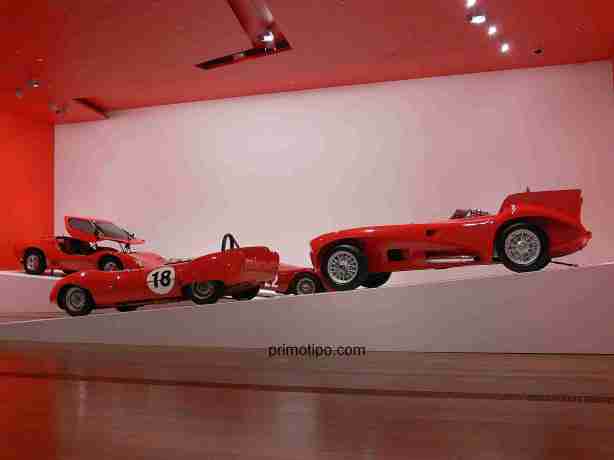

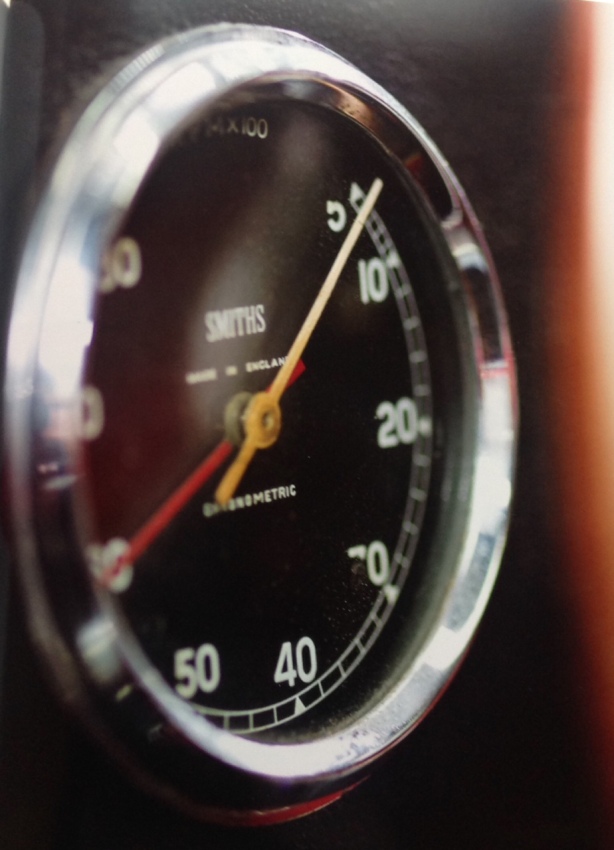

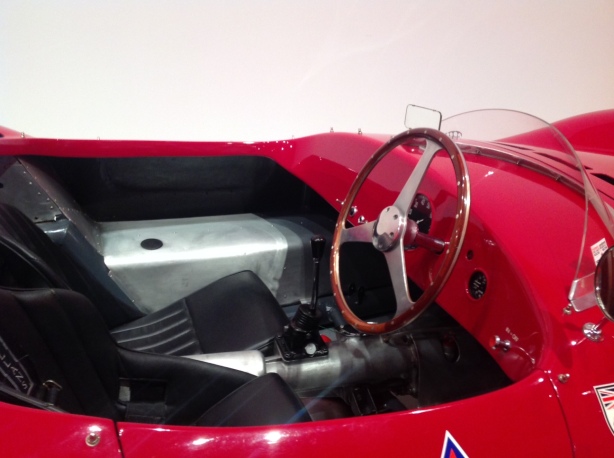



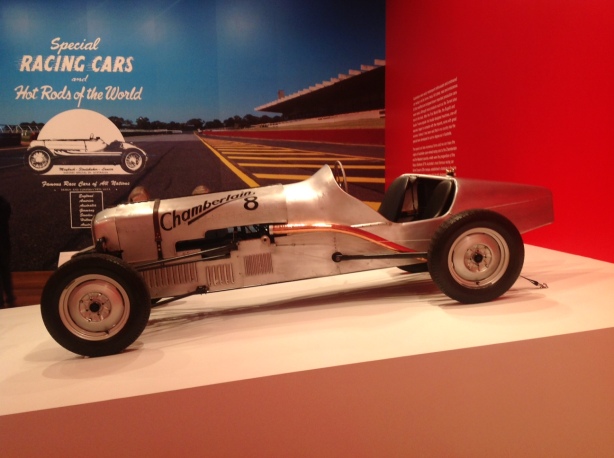





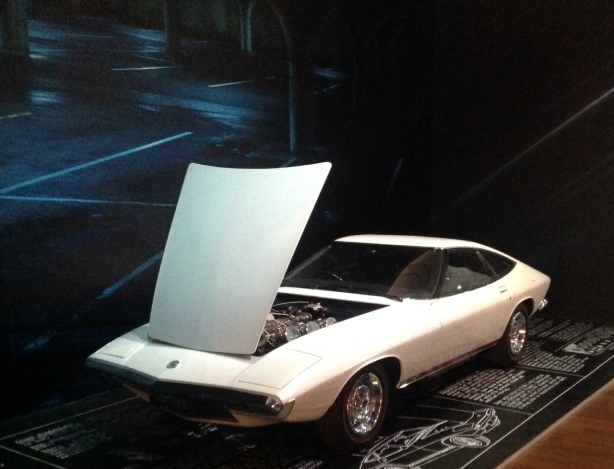









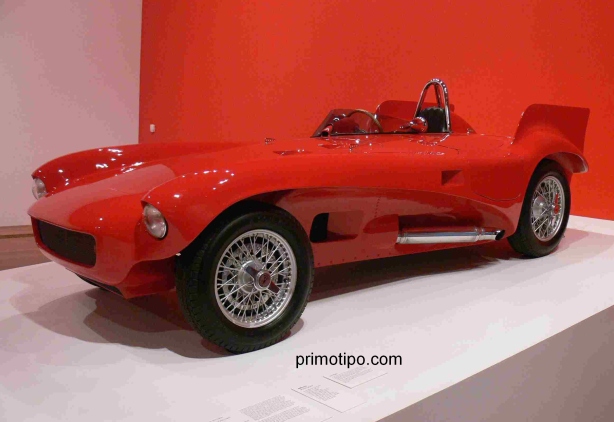





[…] ‘Shifting Gear': Design Innovation and The Australian Car: Exhibition, National Gallery of Vic… […]
Hi there. I just wanted to correct you on one thing. The Ausca was designed and built by Paul England and my father Bill Hickey, not Paul Hickey. I loved the pics of the car. We recently lost Dad but it is great that this car is still going around as a legacy. Thanks.
Many thanks for getting in touch John, I will correct the article later on. I have accumulated a few pictures and an AMS article on the Ausca, I do want to write about it and am keen to have your input if you are interested to share your recollections. Regards, Mark.
Hi Mark, I an happy help you out with whatever info I can. I have several magazine articles from back in the day as well as newspaper cut outs etc. As far as my recollections, my Dad’s involvement with racing and car building ended several years before I was born, so other than watching the car compete in historic events etc, I don’t have much other than what my Dad shared with me over the years.
Thanks John, if you wouldn’t mind scanning those articles that would be a big help. My email address is mark@bisset.com.au and mobile 0419332342, regards, m
[…] markbisset on ‘Shifting Gear': Design… […]
Voted up and useful!
[…] You get a sense of just what a magnificent natural ampitheatre the circuit was, most of but not all of the circuit could be seen from one place. This is the Molina Monza Holden Spl, the shot isn’t dated so not sure who the driver is. The car’s specifications are outlined in this article amongst other Oz cars; https://primotipo.com/2015/05/13/shifting-gear-design-innovation-and-the-australian-car-exhibition-n… […]
[…] and here; https://primotipo.com/2015/05/13/shifting-gear-design-innovation-and-the-australian-car-exhibition-n… […]
[…] Click here for an article about that fantastic gig; https://primotipo.com/2015/05/13/shifting-gear-design-innovation-and-the-australian-car-exhibition-n… […]